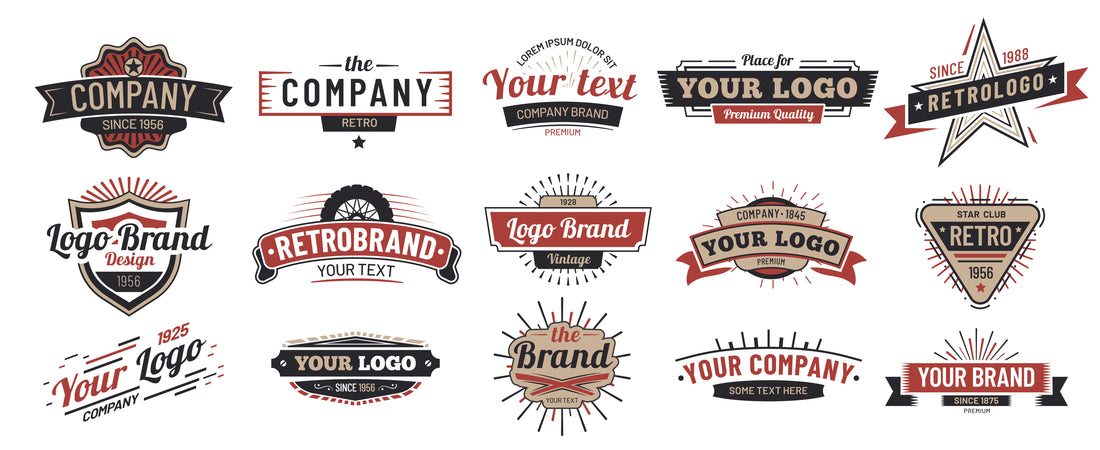When it comes to the world of custom apparel, the power of a well-designed logo cannot be overstated. Your logo is a visual representation of your brand's identity, distilling your company's essence into a single, powerful image. Specifically, in the context of t-shirts, an expertly crafted logo can make the difference between an overlooked garment and a walking billboard for your brand. This guide is crafted to serve as a comprehensive, easy-to-follow blueprint for creating compelling logos that transform ordinary t-shirts into effective marketing tools.
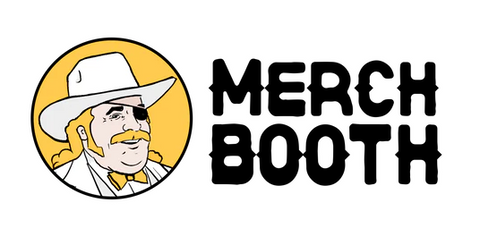
Example of a Professional T-Shirt Logo Design (MerchBooth.com)
The scope of this guide is extensive, making it a valuable resource for anyone interested in logo design for t-shirts. Whether you're a seasoned designer looking to brush up on the principles of good logo design or a newbie aspiring to start your journey, this guide has something for everyone. We will delve into the crucial elements that make a logo effective, principles of design that ensure your logo is not just aesthetically pleasing but also functional, and even walk you through the process of creating your logo.
We recognize the critical role of research and brainstorming in the creation of unique, attention-grabbing logos, and will guide you through this crucial first step in the design process. Further, we'll explore how to apply these principles and processes specifically to t-shirt design, bearing in mind the unique considerations this medium presents.
By the end of this guide, you'll have a comprehensive understanding of logo design for t-shirts. From understanding the core purpose of a logo, researching your target audience, creating your design, to the point of printing it on a t-shirt, we'll walk you through each step. Furthermore, you'll have knowledge of the vital tools needed to protect your logo, the significance of gathering feedback, and the basics of trademarking your design.
In essence, this guide serves as a roadmap to the intricate world of t-shirt logo design. Armed with the knowledge and tools contained herein, you'll be well-equipped to create t-shirt logos that truly stand out. So, let's get started!

Understanding the Basics of Logo Design
Before we delve into the practical steps of creating a t-shirt logo, it's imperative to grasp the essence of a logo and its critical role. A logo is not just a beautiful piece of artwork; it's a powerful tool that encapsulates a brand's identity, conveys its personality, and communicates its core values. It serves as a brand's visual cornerstone, creating the first and lasting impression in the minds of viewers. As such, a logo becomes the silent ambassador of a brand.
In the realm of t-shirt design, logos take on a unique significance. Unlike other mediums, a t-shirt bearing your logo is likely to be seen by many. As people wear your branded t-shirt, they're essentially transforming themselves into moving advertisements for your brand. This provides a valuable opportunity for brand exposure and recognition. Thus, an effective t-shirt logo must be not just attractive but also representative of your brand and memorable.
If you are not a designer the idea of creating a logo for yourself likely seems insurmountable. But there is no reason to worry since a t-shirt logo design company like MerchBooth.com can affordably design you any logo you'd like. Once you complete your logo MerchBooth will also help you place it on tshirts and other garments so you can sell it to make money. Learn more about MerchBooth here - "tshirt logo design by professionals at MerchBooth."
The essential elements of an effective logo boil down to simplicity, versatility, relevance, and memorability. A logo needs to be simple enough to be easily recognized and remembered, yet unique enough to make an impression. It needs to be versatile to work across various platforms and mediums – and yes, that includes t-shirts of different colors and sizes. Relevance is another crucial factor; your logo should be relevant to your brand, your industry, and your target audience. It should speak to what your brand stands for and resonate with your audience. Lastly, a logo needs to be memorable. In a sea of logos and constant information bombardment, your logo should stand out and leave a lasting impression.
In the following sections, we'll delve deeper into how to achieve these crucial elements in your t-shirt logo design. We'll explore the essential design principles, introduce you to the design process, and provide tips on how to effectively incorporate your logo into a t-shirt. As we navigate through these topics, remember the fundamental purpose of a logo - to represent your brand and leave a lasting, positive impression. With this at the core of your design process, you're well on your way to creating a successful t-shirt logo.

Research and Brainstorming
Designing a logo for a t-shirt is not a random act of creativity. It's a structured process that starts with comprehensive research and brainstorming. This preparatory stage is crucial in laying a solid foundation for your logo design.
Firstly, you need to know your audience inside out. Your logo isn't just about representing your brand; it's about connecting with your audience. As such, your design choices should be informed by the tastes, preferences, and needs of your target market. Ask yourself, who will be wearing these t-shirts? What styles and aesthetics resonate with them? Understanding your audience will help you create a logo that appeals to them.
Next, get a firm grasp of your competition. Look at what others in your industry are doing, especially those whose logos are frequently seen on t-shirts. Analyzing your competition can help you identify what works and what doesn't. It can provide you with insights on industry trends and give you a baseline from which you can differentiate your design.
Your Unique Selling Proposition (USP) should also play a significant role in your design process. Identify what sets your brand apart, and consider how you can reflect this in your logo. Whether it's a distinctive product, exceptional service, or a compelling brand story, your USP can be a source of inspiration for your logo design.
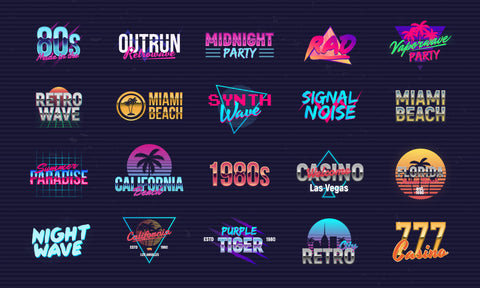
Once you've collected enough data, it's time to brainstorm. Brainstorming is about letting your creativity flow freely. Sketch out all your ideas, no matter how wild or unconventional they may seem. You can always refine them later. Experiment with different styles, fonts, colors, and symbols. Consider how you might integrate your brand's personality and USP into the logo. At this stage, quantity is just as important as quality. The more ideas you generate, the more raw material you have to work with in the next stage of the design process.
In conclusion, research and brainstorming are pivotal in the logo design process. They provide the raw material for your design and help ensure that your logo not only stands out but also resonates with your target audience. In the next section, we'll delve deeper into the principles of logo design, which will guide you in refining and polishing your ideas.
Principles of Logo Design
Armed with a wealth of ideas from your brainstorming session, you're now ready to delve into the actual design process. However, before you start shaping those ideas into a logo, it's essential to understand the fundamental principles of logo design. These principles will act as your compass, guiding you in creating a logo that is not just visually appealing but also effective and functional.
Simplicity: This principle is foundational in logo design. A simple logo is easily recognizable, memorable, and less prone to complications when reproduced. When designing, aim for a design that effectively communicates your brand's identity with minimal elements. Remember, often less is more.
Scalability: Your logo will need to look good at various sizes – from a tiny icon on a website to a large print on a t-shirt. This is why scalability is so crucial. A well-designed logo maintains its legibility and impact, whether it's on a business card or a billboard, or in our case, a t-shirt of any size.
Memorability: An effective logo makes a lasting impression at a glance. To achieve this, your design needs to be unique and engaging. However, remember not to sacrifice simplicity for uniqueness. The goal is to create a design that is both distinctive and straightforward.
Versatility: Given the myriad of platforms and mediums where your logo will appear, versatility is crucial. Your logo should be designed in a way that it looks great in black and white as well as in color, on digital platforms and in print, and of course, on t-shirts of various colors and materials.
Appropriateness: Lastly, your logo should be appropriate for your brand and audience. This doesn't mean it has to spell out what your company does – the Apple logo isn't a computer, after all. However, it should resonate with your audience and reflect your brand's personality and values.
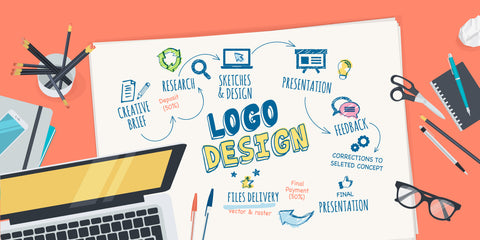
These principles of logo design act as a roadmap, guiding you through the process of turning your ideas into a fully-fledged logo. They help you ensure that your logo is not just aesthetically pleasing but also functionally robust, capable of effectively conveying your brand's identity across various platforms and mediums. In the next section, we'll take these principles into practical application, diving into the design process and techniques that will help you bring your t-shirt logo to life.
If you need help with tshirt logo design check out MerchBooth.com for professional assistance.
Design Process and Techniques
Now that you're equipped with a solid understanding of logo design principles and a wellspring of ideas from your research and brainstorming sessions, it's time to dive into the heart of the matter - the design process. This section will guide you through the steps of transforming your creative concepts into a polished, effective t-shirt logo.
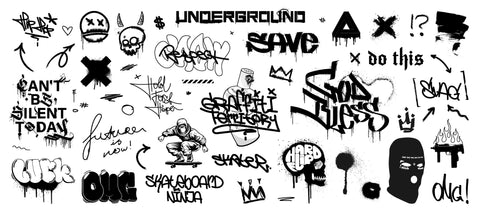
Sketching Initial Concepts: Start by sketching out your ideas on paper. This is where you give your ideas a physical form. Don't worry about making it perfect at this stage. Rough sketches allow you to quickly explore different ideas, and provide a visual reference for your design. Experiment with different shapes, symbols, typefaces, and layout options. Remember the principles of logo design as you sketch: keep it simple, scalable, memorable, versatile, and appropriate.
Digitizing the Logo: After sketching, choose your best concepts and recreate them digitally using graphic design software. There are several options available, but Adobe Illustrator and CorelDRAW are popular choices due to their vector-based capabilities. This ensures your logo maintains its quality when scaled up or down - remember the principle of scalability. The digitization stage also allows you to refine your design, experiment with color, and perfect the details.
Color Psychology and Typography in Logo Design: The color and typography you choose play a crucial role in conveying your brand's personality. Colors can evoke specific emotions and associations. For instance, blue often conveys trust and professionalism, while red can evoke energy and passion. Typography, on the other hand, can speak to your brand's style - whether it's traditional or modern, playful or serious. Choose your colors and typography carefully, keeping in mind their impact on your logo's overall message.
Designing with Printing in Mind: A great t-shirt logo isn't just a visually appealing design; it also takes into account the medium it will be printed on. Understand the technicalities of t-shirt printing methods such as screen printing, direct-to-garment (DTG), and heat transfer. For example, screen printing may limit the number of colors you can use, while DTG allows for more detailed and multi-colored designs. Your understanding of these methods will influence your design decisions and ensure the end product looks as good in real life as it does on your screen.
This design process is a journey of refinement, where your initial ideas are honed and polished through various stages into a final logo that effectively represents your brand on a t-shirt. Remember that this process is iterative; you may need to revisit earlier stages as you progress, and that's perfectly fine. The goal is to create a logo that not only aligns with the principles of design but also resonates deeply with your audience and is perfectly tailored for t-shirt printing. In the next section, we'll guide you on how to incorporate your logo onto a t-shirt seamlessly.
Incorporating a Logo Design into a T-Shirt
Congratulations! You have successfully designed a logo that is simple, scalable, memorable, versatile, and appropriate. The next step is to incorporate this logo onto a t-shirt, a process that requires thoughtful consideration to ensure optimal impact and aesthetic appeal.
Positioning Your Logo: The placement of your logo on the t-shirt significantly affects its visibility and overall impact. While the most common location is the center of the chest area, don't be afraid to think outside the box. Consider alternate placements such as the upper left chest, the middle or bottom of the t-shirt, or even on the back. The positioning should, however, align with your brand's personality and the message you want to convey.
Scaling Your Logo: When it comes to logo size, bigger isn't necessarily better. The key is to find a balance. A logo that's too large can be overwhelming, while one that's too small may be hard to see. Consider your logo's complexity and the level of detail when deciding on its size. Ensure your logo is clearly visible and legible, yet not overpowering.
Color Contrast Between the Logo and T-Shirt: The colors of your logo should contrast well with the t-shirt color to ensure visibility. A dark logo on a dark t-shirt or a light logo on a light t-shirt will lack visibility. Experiment with different t-shirt colors, keeping in mind the color psychology principles you used in your logo design.
Remember, a t-shirt is not just a canvas for your logo; it's a wearable piece of art. Strive for balance and aesthetics, ensuring your logo enhances rather than detracts from the t-shirt's overall look. Always keep your target audience in mind – the ultimate goal is to create a t-shirt that they will be proud to wear, turning them into walking ambassadors of your brand.

Protecting Your Logo Design
After investing significant time and creativity into your logo design, it's important to protect your work. Trademarking your logo provides legal protection against its unauthorized use.
Start by conducting a trademark search to ensure your logo doesn't infringe on existing trademarks. You can do this via the United States Patent and Trademark Office’s (USPTO) database. If it's unique, file an application with the USPTO to register your logo as a trademark.
Remember, obtaining a trademark can be a complex process, and hiring a trademark attorney could be beneficial. Protecting your logo helps safeguard your brand's identity and the investment you've made into its creation.
Final Thoughts
Creating a logo for a t-shirt is a comprehensive process that involves understanding your brand, researching, brainstorming, applying design principles, and testing. By following the steps outlined in this guide, you're well on your way to creating a logo that not only captivates your audience but also effectively represents your brand. Remember, a well-designed logo can transform a simple t-shirt into a powerful brand statement. So take your time, let your creativity flow, and create a design that will proudly represent your brand on every t-shirt it adorns.
Resources and Further Reading
For further insights and guidance, consider these resources:
1. "Logo: The Reference Guide to Symbols and Logotypes" by Michael Evamy – A comprehensive book on logo design with thousands of examples to inspire you.
2. "The USPTO’s Trademark Basics" – An official guide to understanding and navigating the trademark process.
3. Behance and Dribbble – Online platforms showcasing logo designs from professionals worldwide. A great source for inspiration and staying updated on design trends.
4. Adobe Illustrator and CorelDRAW Tutorials – Explore online tutorials to enhance your skills in these popular logo design software.
5. "The Psychology of Color in Marketing and Branding" by Gregory Ciotti – An insightful article exploring color psychology in depth.
Remember, learning is a continuous journey. Keep exploring, experimenting, and expanding your knowledge to master the art of t-shirt logo design.
Frequently Asked Questions about T-Shirt Logo Design
What software should I use to design a t-shirt logo?
When it comes to designing a captivating and impactful t-shirt logo, selecting the right software is paramount. You need a tool that empowers your creativity, provides professional-grade features, and ensures a seamless design process. Look no further than Adobe Illustrator, the undisputed champion of logo design software.
Adobe Illustrator is the industry standard and the go-to choice for professional graphic designers worldwide. Renowned for its versatility and powerful vector-based capabilities, Illustrator offers an extensive array of tools and features tailored specifically for logo design.
One of the key advantages of Adobe Illustrator is its ability to create scalable vector graphics. This means your logo can be resized without any loss of quality, ensuring it looks flawless on t-shirts of various sizes. Whether you're aiming for a small chest logo or a bold back design, Illustrator's vector-based approach ensures your logo remains crisp and sharp at any scale.
The software provides a user-friendly and intuitive interface, allowing you to easily navigate and explore its vast array of design tools. From precise shape creation and manipulation to advanced color blending and gradient options, Illustrator offers unparalleled flexibility in bringing your vision to life. Its comprehensive selection of fonts and typography features further enhances your logo's uniqueness and visual impact.
Moreover, Adobe Illustrator enables seamless integration with other Adobe Creative Cloud applications, such as Photoshop and InDesign. This integration allows you to effortlessly transfer your designs between programs, offering limitless possibilities for incorporating your logo into other designs or promotional materials.
Furthermore, Adobe Illustrator boasts a thriving online community, comprising tutorials, forums, and extensive documentation. Whether you're a seasoned designer or a beginner taking your first steps into logo creation, the abundant resources available make learning and mastering Illustrator an enjoyable and enriching experience.
In conclusion, when it comes to designing a remarkable t-shirt logo, Adobe Illustrator stands head and shoulders above the competition. Its industry-leading features, vector-based approach, intuitive interface, and extensive online support make it the definitive software choice for professionals and aspiring designers alike. Unleash your creativity and craft a logo that captures attention, using the unparalleled capabilities of Adobe Illustrator.
How do I choose the right color for my logo?
Selecting the right color for your logo is a critical decision that can profoundly impact its effectiveness and leave a lasting impression on your audience. The power of color psychology should not be underestimated, as it can evoke specific emotions, establish brand identity, and influence consumer behavior. To ensure your logo exudes the desired impact, here are essential guidelines to assist you in choosing the perfect color palette.
1. Understand your brand: Begin by comprehending your brand's essence, values, and target audience. Consider the personality traits you want your logo to convey: is it bold and energetic, calm and sophisticated, or perhaps playful and vibrant? By aligning the colors with your brand's character, you create a visual representation that resonates with your intended audience.
2. Embrace color psychology: Different colors evoke distinct emotional responses. For instance, red signifies energy, passion, and urgency, while blue conveys trust, reliability, and tranquility. Take advantage of color psychology to align your logo with the desired emotional response from your target audience. Consider how your brand's message and values can be enhanced through the strategic use of color.
3. Consider industry norms: While it's essential to differentiate your brand, it's also crucial to consider the industry in which you operate. Analyze the color palettes commonly associated with your industry and competitors. While you don't want to blend in entirely, incorporating some familiar colors can help establish credibility and make your logo more relatable within your industry.
4. Optimize for versatility: Your logo will be used across various mediums, from digital platforms to print materials. Ensure that the colors you choose translate well in different contexts and maintain their visual impact. Consider how your logo will appear in both full-color and grayscale, as well as on different backgrounds. Aim for a color palette that remains visually striking and legible in all scenarios.
5. Limit your color palette: It's generally advisable to keep your color palette simple and focused. Too many colors can dilute your message and make your logo visually overwhelming. Select two to four colors that work harmoniously together, allowing for versatility while maintaining a cohesive and memorable aesthetic.
6. Test and gather feedback: Before finalizing your logo's color scheme, seek feedback from your target audience, colleagues, or design professionals. Conduct surveys or focus groups to gauge the emotional response and impact of different color combinations. This input can provide valuable insights and guide your decision-making process.
Remember, choosing the right color for your logo is an artful balance between creativity, strategy, and understanding your audience. By considering your brand's identity, employing color psychology, acknowledging industry norms, prioritizing versatility, limiting your palette, and seeking feedback, you can confidently select a color scheme that elevates your logo's visual impact and effectively communicates your brand's message.
Do I need to trademark my logo?
Absolutely, trademarking your logo is a crucial step in protecting your brand identity and ensuring its exclusive use. By obtaining a trademark, you gain legal rights and ownership over your logo, preventing others from using or imitating it without your permission. Let's delve into the compelling reasons why trademarking your logo is a wise and necessary decision.
1. Safeguard your brand identity: Your logo serves as the visual representation of your brand, encapsulating its values, reputation, and unique characteristics. Trademarking your logo provides legal protection, establishing your exclusive rights to its use. This safeguard ensures that competitors or unauthorized entities cannot copy or misuse your logo, preserving your brand's distinct identity and reputation.
2. Prevent confusion and consumer deception: Trademarking your logo helps prevent confusion among consumers and safeguards them from deceptive practices. Your logo becomes a recognizable symbol associated with your products or services. By obtaining a trademark, you establish a clear distinction between your brand and others in the marketplace, reducing the likelihood of consumer confusion and protecting your customers from potential harm or disappointment.
3. Establish market exclusivity: Trademarking your logo grants you the exclusive rights to its use within the jurisdiction of the trademark registration. This exclusivity allows you to differentiate your brand and create a competitive advantage. It prevents competitors from using similar logos that could dilute your brand's impact, reputation, or market share. With a registered trademark, you have legal recourse to enforce your rights and take action against those who infringe upon your logo.
4. Enhance brand value and credibility: A registered trademark adds significant value to your brand. It demonstrates to consumers, investors, and partners that you are committed to protecting your intellectual property and maintaining a professional and trustworthy image. A registered trademark elevates your brand's credibility, distinguishing it as a reliable and established entity in the market.
5. Expand nationally and internationally: Registering your logo as a trademark provides the opportunity to expand your brand presence nationally or even internationally. With a registered trademark, you can pursue legal protection in multiple jurisdictions, allowing you to enter new markets and prevent unauthorized use of your logo across various regions.
6. Simplify legal enforcement: Having a registered trademark simplifies the process of enforcing your rights if someone infringes upon your logo. It provides a strong legal foundation, making it easier to pursue legal action, seek damages, and protect your brand's interests. Without a registered trademark, enforcing your rights becomes more complex, costly, and time-consuming.
In conclusion, trademarking your logo is an essential step in safeguarding your brand's identity, reputation, and market position. By obtaining a registered trademark, you gain exclusive rights, prevent confusion among consumers, establish market exclusivity, enhance brand value and credibility, expand your reach, and simplify legal enforcement. Protect your logo and secure your brand's future by taking the necessary steps to obtain a registered trademark.
How can I ensure my logo design is unique?
Ensuring the uniqueness of your logo design is paramount in establishing a distinct brand identity and avoiding any potential legal issues. By following these essential guidelines, you can confidently create a logo that stands out from the crowd and remains unmistakably yours.
1. Research and ideation: Begin by conducting thorough research to familiarize yourself with existing logos in your industry and beyond. Explore various sources, such as competitors, related industries, design portfolios, and trademark databases. This research helps you identify common design elements and trends, allowing you to steer clear of unintentional similarities.
2. Concept development: Dedicate ample time to the brainstorming and concept development phase. Focus on generating original ideas and exploring unique visual representations of your brand's essence, values, and messaging. Encourage creativity and embrace unconventional approaches to design. This ensures your logo has a distinctive and memorable character from the outset.
3. Avoid generic symbols and clichés: Steer clear of generic symbols or design elements that are commonly associated with your industry. Overused icons or clichéd visuals can make your logo appear uninspired and blend in with competitors. Strive for originality by finding innovative ways to represent your brand's core message without relying on tired clichés.
4. Custom typography and illustrations: Consider customizing typography and illustrations to add a unique touch to your logo design. Utilize professional graphic designers or typographers who can create custom lettering or illustrations tailored specifically for your brand. This bespoke approach ensures your logo stands out and reflects your brand's individuality.
5. Test for similarity: Before finalizing your logo, conduct a comprehensive similarity search. Utilize online search engines, image recognition tools, and trademark databases to ensure your design doesn't resemble existing logos or infringe upon anyone's intellectual property. By conducting thorough checks, you can mitigate the risk of unintentional similarities and potential legal complications.
6. Seek professional design assistance: If you lack design expertise, consider engaging professional graphic designers or design agencies. These experts possess the knowledge, experience, and creativity to bring your vision to life while ensuring uniqueness. Collaborating with professionals maximizes your chances of creating a truly distinctive logo.
7. Trademark registration: Once your logo design is finalized, consider registering it as a trademark. This legal protection provides additional assurance of uniqueness and grants you exclusive rights to its use. Trademark registration strengthens your logo's distinctiveness and safeguards your brand's identity in the marketplace.
By following these guidelines, you can ensure that your logo design remains truly unique and distinctive. Through thorough research, creative concept development, avoiding clichés, customizing typography and illustrations, conducting similarity checks, seeking professional assistance, and considering trademark registration, you establish a strong foundation for a logo that sets your brand apart and captures the attention of your target audience.
Where should I place my logo on the t-shirt?
Deciding on the optimal placement of your logo on a t-shirt is crucial for maximizing its visibility, impact, and brand recognition. Strategic logo placement can significantly enhance the overall aesthetic appeal of the garment while effectively conveying your brand message. To ensure your logo stands out and leaves a lasting impression, consider the following key placement options:
1. Centered Chest: Placing your logo at the center of the chest is a classic and popular choice. This placement ensures your logo is prominently displayed, making it easily visible to others. It provides a balanced and symmetrical look, drawing attention to the upper torso. This placement works well for a wide range of t-shirt styles and is particularly effective for creating a strong focal point.
2. Left Chest: Placing your logo on the left side of the chest is a traditional and widely accepted position. This location aligns with the wearer's heart and is often associated with brand loyalty. The left chest placement is commonly used for corporate logos, sports team emblems, and personal monograms. It imparts a sense of professionalism and allows for easy logo recognition.
3. Shoulder or Sleeve: Placing your logo on the shoulder or sleeve of a t-shirt adds a unique and visually appealing touch. This placement works well for designs that are longer or narrower in shape. It adds a modern and trendy look to the garment and can serve as a distinctive branding element. Additionally, placing your logo on the sleeve provides additional visibility from different angles, especially when the wearer is in motion.
4. Back of the Neck: Placing a smaller version of your logo at the back of the neck is an effective way to reinforce brand identity. This discreet placement is often seen as a subtle branding element that adds a touch of sophistication. It is especially useful when you want to maintain a clean and minimalistic design on the front of the t-shirt while still incorporating your logo into the overall garment.
5. Full Back: For designs that demand maximum impact, placing your logo across the entire back of the t-shirt can create a bold statement. This placement works well for larger logos or designs that require more space. It allows for increased visibility, making your brand instantly recognizable from a distance. Full back placement is commonly used for event t-shirts, promotional campaigns, and sports team jerseys.
Consider the style, purpose, and target audience of your t-shirt when choosing the logo placement. Experiment with different options, keeping in mind the overall balance and harmony of the design. Remember, the key is to ensure your logo is clearly visible, legible, and aligned with your brand's identity. By strategically placing your logo on the t-shirt, you can effectively communicate your brand message and create a visually appealing garment that captivates your audience.
What are some good resources for logo design inspiration?
When embarking on a logo design journey, finding inspiration is crucial to spark creativity and develop unique ideas that effectively represent your brand. Fortunately, numerous resources are available to provide an abundance of logo design inspiration. Explore these valuable sources to ignite your imagination and create a logo that truly stands out:
1. Online Design Galleries: Websites like Behance, Dribbble, and LogoPond showcase a vast collection of logo designs created by talented designers from around the world. Browse through these galleries to discover a multitude of creative concepts, innovative typography, clever use of shapes, and inspiring color combinations. These platforms often provide additional insights into the design process, enabling you to understand the strategies and techniques behind successful logo creations.
2. Branding and Design Blogs: Follow reputable branding and design blogs that feature articles, showcases, and case studies on logo design. Websites such as Logo Design Love, LogoLounge, and Creative Bloq offer valuable insights, trends, and in-depth analysis of logo design techniques. These platforms provide a wealth of inspiration, expert opinions, and practical tips from industry professionals to help you refine your logo design skills.
3. Design Books and Publications: Explore a wide range of design books and publications that focus specifically on logo design. Authors like Paul Rand, Michael Bierut, and David Airey have written influential books that delve into the principles, history, and best practices of logo design. These resources not only offer inspiration but also provide valuable knowledge and perspectives that can elevate your logo design process.
4. Social Media Platforms: Utilize social media platforms like Instagram, Pinterest, and Twitter to discover a wealth of logo design inspiration. Follow design-related accounts, hashtags, and communities dedicated to showcasing exceptional logo designs. You'll find a continuous stream of creative ideas, design trends, and thought-provoking concepts shared by designers and design enthusiasts worldwide.
5. Nature and the Environment: Look to the world around you for inspiration. Nature, architecture, and everyday objects can provide unexpected design elements, patterns, and color schemes that can be translated into your logo. Explore the textures, shapes, and colors found in natural landscapes, flora, and fauna. By observing the world with a designer's eye, you can uncover unique and organic design concepts.
6. Historical and Cultural References: Draw inspiration from historical periods, art movements, or cultural symbols. Research iconic logos, heraldry, traditional craftsmanship, or indigenous art to find design elements that resonate with your brand's story or values. By incorporating historical or cultural references into your logo design, you can create a sense of depth, authenticity, and uniqueness.
Remember, while seeking inspiration, it's crucial to maintain originality and avoid outright copying or plagiarism. Let these resources ignite your creativity, spark new ideas, and serve as a springboard for developing your own unique logo design concepts. Strive to create a logo that authentically represents your brand and sets it apart from the competition.

